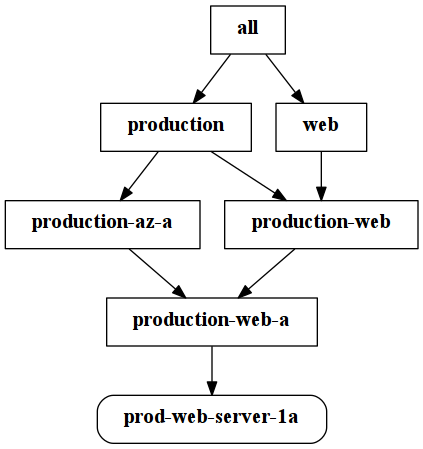What Ops can learn from Dev
Will Thames
21 July 2016
Overview
About this talk
- About how Ops write, store and use code
- Configuration/Deployment/Orchestration focus
- Heavily based on my DevOps Days Melbourne talk
- But the Ansible edition
About me
- Systems Engineer at Red Hat
- Previously at Suncorp and Betfair
- Contributor to Ansible
- Creator of ansible-lint, ansible-inventory-grapher and ansible-review
Sharing code
Version control
- Have some. Which one is relatively unimportant.
- Find out when something was changed, and by whom.
- See what changed, and hopefully why (needs good commit messages!)
- Go back in time - revert changes, compare differences
Separation of code and data
- Hardcode as little as possible in your templates and task files (there is such thing as premature templating though!)
- Try and make it so that your code could be shared with the world without giving anything away
Secrets
- You will need a solution to what to do with secrets. There are many
- ansible-vault
- Hashicorp's Vault
Higher level languages
Why use configuration management? Surely bash scripts in an ssh loop will suffice?
Why use python or ruby? Surely assembly or C will suffice?
Higher level languages
- Repeatability
- Error handling
- Reduction of boilerplate code
- Abstraction of patterns to higher layers
- Templating
- API calls
Abstraction and reuse
- As with functions, modules, libraries and packages, wrap up common operations into reusable code.
This might be a module for installing and configuring java, or deploying a particular application type.
- Ansible has roles for grouping a bunch of operations.
Ansible has modules for creating new operations.
Community
- Separation of code and data (particularly secret data) allows you to share your work with others.
- If you are able to share your code, others will benefit, and yet others will improve it.
- You can also benefit from work others have done - look for roles that others have written before writing your own.
- See Ansible Galaxy
Data Inheritance
- Only write as much configuration as you need
- Some variables will be common to all applications across a particular environment
- Some variables will be common to all environments for a particular application
- Use Ansible groups to manage the inheritance hierarchy
- ansible-inventory-grapher can help show the inheritance hierarchy
Inheritance

Repeatability
- What happens if you run your code twice?
- What happens if the second time is six months from now?
Versions
- Tag your roles with version numbers. Specify a version number when including roles with a playbook.
- Furthermore specify versions when pulling things from yum, apt-get, git, mercurial etc.
Code quality
Quality control
- Use the tools
- ansible-lint
- pep8, go fmt et al.
- dry run mode, diff mode
Best practices and Standards
- Have some.
- We manage our standards and best practices as a git repo using pull requests
- Any changes/additions to best practices and standards must achieve a body of support (we use +2 overall)
- Best practices is an advisory of things to consider
- Standards are a set of tests, preferably automatable
Code reviews
- All code reviews should be objective. If you're objecting to a style issue, it should be written down (internally or using an existing style guide for a language/framenwork)
- Have a policy on what level of consensus is required to accept code into the mainline codebase
- This will typically be a risk management tradeoff (we use +1 for stuff that is independent and can be pinned to a version, and +1 human with +1 automated for everything that can break a lot of stuff)
- ansible-review can help with maintaining standards at review time.
Testing
- Have some.
- Production-like environments
- Virtual machines
- Containers
- AWS/GCE/Azure etc
- Anything that isn't "your machine" - needs to be configured using the same tooling as live.
Continuous Integration
Pipeline:
- Commit →
- Checkout →
- Static analysis →
- Automated provisioning →
- Apply configuration →
- Run test suite (e.g. serverspec)
Thanks
Questions?
Slides
https://willthames.github.io/ansible-brisbane-07-2016